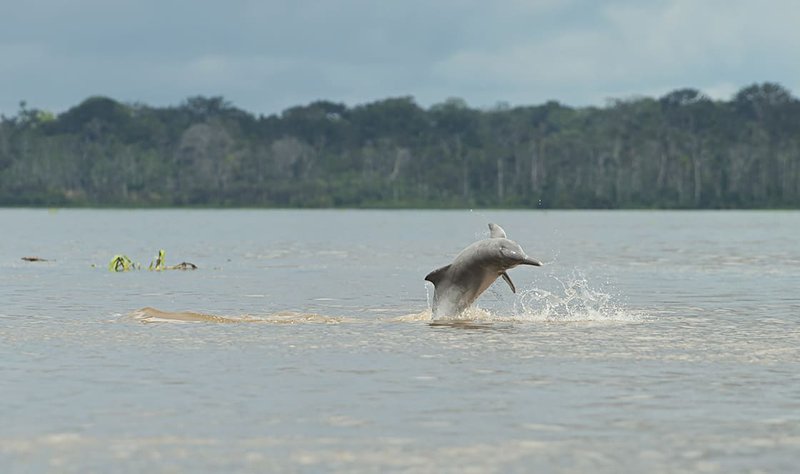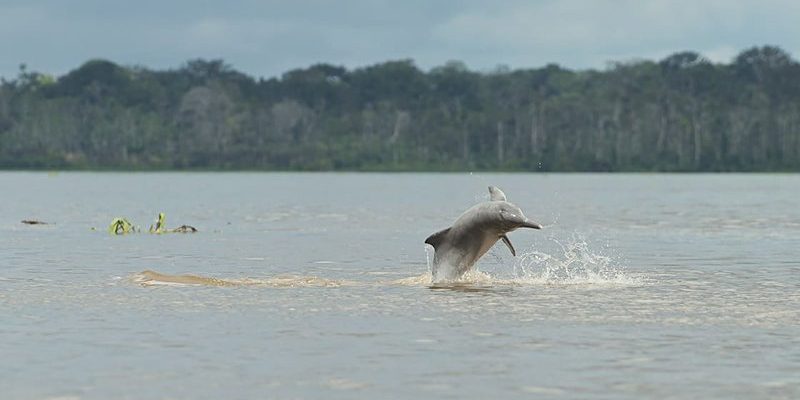
Think about it. Imagine living in a place that’s supposed to be your home but is constantly under threat from pollution, habitat loss, and human activity. That’s the reality for Amazon river dolphins. They rely on the health of their ecosystem to thrive, and when that ecosystem is in trouble, so are they. Let’s dive deeper into the various dangers these incredible animals face.
Habitat Loss
One of the most significant threats to the Amazon river dolphin is habitat loss. As human populations grow, our need for land and resources does too. Deforestation is a major issue—a lot of the Amazon rainforest is being cut down for agriculture, roads, and urban development. This not only shrinks the available habitat for the dolphins but also disrupts the entire ecosystem.
When trees are removed, the rivers can become more polluted and vulnerable to erosion. The *boto* relies on healthy river systems for food and shelter, so when its home is altered, the dolphin’s survival becomes increasingly difficult. It’s like trying to find a cozy spot in a house that’s gradually being torn apart.
Additionally, the construction of dams for hydroelectric power blocks the rivers, changing the water flow and temperature. This can make it harder for dolphins to find food and navigate their home. Picture trying to swim upstream in a river that’s suddenly been altered to flow differently—frustrating, right?
Water Pollution
Water pollution is another major issue affecting Amazon river dolphins. With increasing industrial activities and agricultural runoff, toxins are frequently dumped into the water. This pollution can come from a variety of sources, including:
- Pesticides used in farming
- Waste from industries
- Sewage from urban areas
These pollutants can accumulate in the dolphin’s body, leading to severe health problems. Imagine drinking dirty water—it can make you feel sick, right? That’s the reality for the *boto*. As the toxins build up, they can cause illness and even decrease reproduction rates. When you think about it, a dolphin’s health is a reflection of its environment. If the water is polluted, the dolphins are at risk.
Moreover, oil spills and heavy metals can severely compromise the health of both the dolphins and the fish they eat. If the fish are contaminated, then the dolphins who rely on them for food face even more danger. It’s a vicious cycle that highlights just how interconnected everything is in the Amazon ecosystem.
Fishing and Bycatch
Fishing is a common livelihood for many people living in the Amazon region, but it also poses a significant threat to river dolphins. While fishing itself isn’t inherently a bad thing, some practices can be harmful. For instance, the use of gillnets can unintentionally trap dolphins, leading to drowning or injury. Imagine trying to swim in a net that keeps pulling you back—it’s not a pleasant thought and can be fatal.
Bycatch, which refers to the capture of unintended species during fishing, is a huge problem for the *boto*. Many dolphins end up getting caught in nets meant for fish, leading to stress and death. Here’s the thing: if dolphins can’t swim freely, they can’t hunt or communicate with their pods, which are essential for their survival.
Additionally, overfishing depletes the food sources available for the dolphins. If the fish they rely on start to dwindle, the dolphins will undergo significant stress and may even starve. It’s a tragic cycle that impacts not just the dolphins, but the entire aquatic ecosystem.
Climate Change
Climate change is a looming threat that impacts every corner of the world, including the Amazon River and its inhabitants. Rising temperatures can lead to changes in water levels and flow patterns, which can disrupt the dolphins’ habitat. You might wonder how warming waters could affect them. Well, changes in temperature can impact the availability of food, such as fish, which are sensitive to temperature shifts.
Moreover, climate change can exacerbate extreme weather events, leading to flooding or droughts in the Amazon basin. Flooding can alter the structure of the river, while drought can limit the dolphins’ access to necessary resources. It’s a bit like playing a game of chance; you never know what’s coming next, and that unpredictability can be devastating.
As the climate continues to shift, the delicate balance of the Amazon ecosystem becomes even more precarious. Dolphins, being at the top of the food chain, are often vulnerable indicators of environmental health. If they’re struggling, it’s a sign that the whole system is in trouble.
Human Disturbance and Tourism
Tourism can be a double-edged sword for the Amazon river dolphin. On one hand, it raises awareness about these magnificent creatures and can help fund conservation efforts. But on the other hand, increased human activity in their habitat can be disruptive. Imagine a peaceful place suddenly filled with loud boats and tourists trying to catch a glimpse of you—that would be stressful, right?
Increased boat traffic can lead to collisions with dolphins, which can result in injuries or even death. Additionally, noise pollution from boats can interfere with the dolphins’ communication, which is vital for their social interactions and navigation. It’s like trying to have a conversation in a crowded, noisy café—almost impossible!
Moreover, irresponsible tourism can lead to habitat degradation. If people are trampling vegetation along riverbanks or leaving trash in the water, it can harm the delicate ecosystem that the *boto* depends on. Tourism needs to be managed sustainably to ensure the safety and well-being of both the dolphins and the environment.
Conservation Efforts
Thankfully, awareness of the threats to the Amazon river dolphin has led to various conservation efforts. Organizations are working tirelessly to protect these dolphins and their habitats. You might be wondering what can be done. Here are a few key efforts:
- Establishing protected areas: Creating conservation zones helps ensure that critical habitats remain untouched by development and pollution.
- Community engagement: Educating local communities about the importance of river dolphins encourages sustainable practices that benefit both people and wildlife.
- Research and monitoring: Scientists keep a close eye on dolphin populations and their habitats to better understand their needs and threats.
These efforts are critical in ensuring the future of the *boto*. But conservation doesn’t happen in a vacuum; it requires collaboration between governments, local communities, and non-profits. When everyone works together, we can create a healthier environment for the dolphins and the entire Amazon ecosystem.
Why Protecting the Amazon River Dolphin Matters
You might be wondering why all of this matters. Protecting the Amazon river dolphin is not just about saving a single species; it’s about preserving an entire ecosystem. This dolphin is a key species in the Amazon River system, and its presence indicates a healthy environment.
Furthermore, the Amazon rainforest itself plays a crucial role in regulating the Earth’s climate. By protecting one part of this vast ecosystem, we help ensure its stability and sustainability for future generations. It’s all connected—just like a web, pulling on one strand affects everything else.
In essence, safeguarding the Amazon river dolphin helps maintain biodiversity, which is vital for a resilient planet. Not to mention, these dolphins are a part of our natural heritage, representing the beauty and complexity of life on Earth. So, the next time you think about these incredible pink creatures, remember the bigger picture.
As we wrap up this discussion on the common threats to the Amazon river dolphin, it’s clear that many challenges lie ahead. But with awareness and concerted efforts, there’s hope for these enchanting creatures. Let’s work together to ensure that the beauty of the Amazon and its inhabitants continues to thrive for generations to come.

